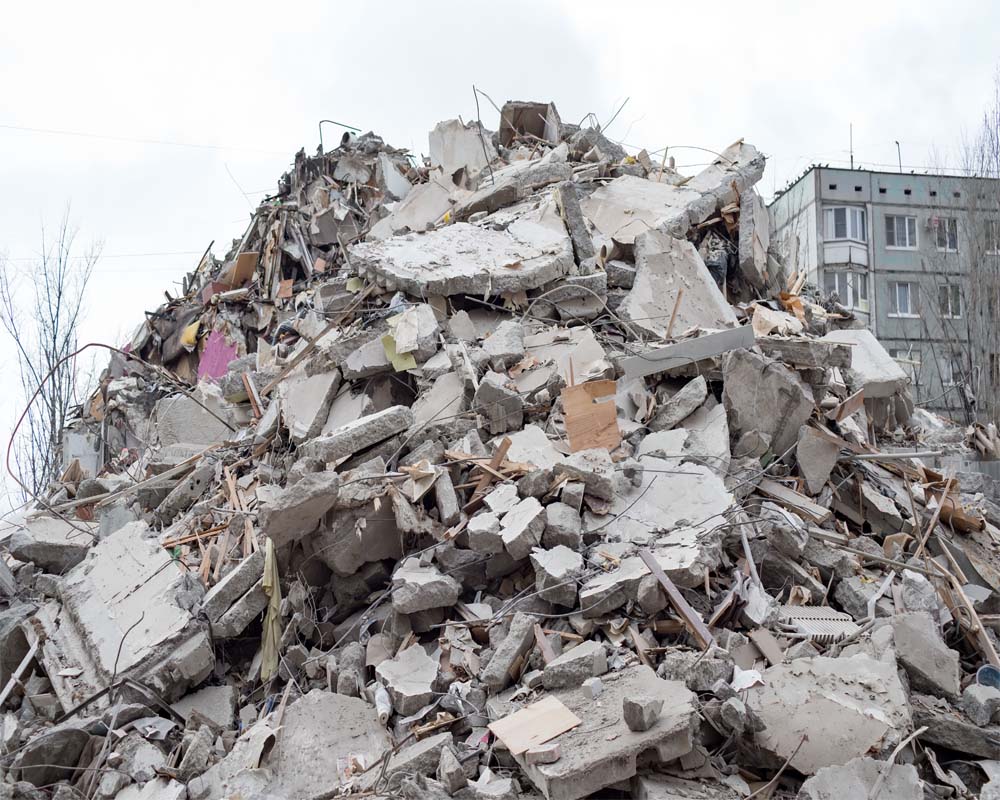Inefficient recycling of construction and demolition waste is indicative of the nation’s disregard for the environment and this can no longer be overlooked
As new commercial skyscrapers and lofty residential buildings continue to be the hallmark of “developed” cities, there is a virtual race among the builders to tear down older structures and replace them with energy-guzzling, steel and glass buildings that trap heat and require enormous air-conditioning input in order to make them liveable. The city skyline no doubt looks impressive but the more the skyline improves, the more the construction and demolition waste (CDW) on the ground level increases, as it is illegally dumped by builders on roadside and in landfills. India produces 150 million tonnes of CDW annually. The generation, management, recycling and finally disposal of this waste is governed by guidelines and rules put in place by the Ministry of Environment, Forests and Climate Change (MoEF&CC) under the Construction, Demolition and Waste Management Rules 2016. But the implementation and enforcement of the rules is insipid and lax. This is apparent by the dismal recovery and recycling rate of the CDW, which currently stands at about one per cent of the 150 million tonnes generated. The rest of the waste is left lying in residential areas, landfills and other urban spaces, which contributes to air and water pollution, not to mention spoiling the look and feel of our urban living environs. Given the huge gap between generation of the waste and its recycling, it is vital for a third party, such as an NGO, to apply for Government data under the Right to Information Act and appraise the implementation of these rules and compliance by the construction sector. They must also assess what difference they have made on the ground. The already burdened infrastructure is further hobbled by the fact that the recycling paraphernalia available with the Government is sufficient to handle a meagre 6,500 tonnes daily which renders an enormous backlog of CDW that gets illegally and irresponsibly disposed off.
The root cause of this wide gap between CDW generation and recycling is the slow pace in establishment of recycling facilities. As per estimates, 53 cities were expected to set up recycling units by 2017 but only 13 are in place. This alarmingly slow progress is further made worse by the rapid consumption of building materials which indicates that construction activity both in commercial and residential sectors is happening swiftly. As land is scarce, this construction is taking place by demolishing the existing old structures and this is rapidly contributing to the generation of CDW. The Swachh Survekshan 2021 has thankfully started putting emphasis on recycling and management of CDW, but it still needs to be instilled into the urban stakeholder, be it private or Government entities, that how a city fares in the survey will also depend on how it manages its CDW footprint. This can be done at the possible origin of the waste wherein the architects can be encouraged to recycle the demolition waste and use it in the new project. According to estimates, if CDW recycling is in-built into the architect’s plan, then 33 per cent of waste generation can be avoided. Similarly, specialised machines and equipment must be made available by the building contractors to the architects so that on-site waste generation is quickly turned around and converted or recycled into usable building material. This not only saves money for the building project but also confirms to the Bureau of Indian Standards (BIS) norms that allow usage of concrete made from recycled CDW.
The present COVID-19 crisis has almost brought the construction sector to a grinding halt. This is unwelcome news for the sector but provides an opportunity for India to take stock of the CDW scenario. This lull can enable the Government and allied environmental agencies to rapidly put in place a strategy that ensures the efficient handling of CDW when building starts gaining momentum. As a part of this, it is essential to first spot the regulatory and technical barriers that are hampering the effective handling of the waste being generated. In the same process, it is also critical to ensure on-site recycling of CDW and enable a sustained sale of the recycled material in the market at economical rates. This will help ingrain the practice of CDW recycling at the epicentre of its generation.
The authorities must also set in place robust systems to collect data pertaining to CDW being generated and based on this a protocol must be designed that not only displays the region-wise generation of CDW but also breaks down the waste into sub-categories. This will help design forecasts of how recycled material can be made available in the building material market without any supply disruptions. The Government must also design special categorisation programmes in which those buildings will fall that have a certain certified percentage of recycled CDW used in them. This must automatically qualify these buildings as green buildings and make them eligible for rebates on electricity and property tax charges. Inefficient recycling of CDW is indicative of the nation’s disregard for the environment and this must not be overlooked.
(The writer is an environmental journalist)








 OpinionExpress.In
OpinionExpress.In















Comments (0)